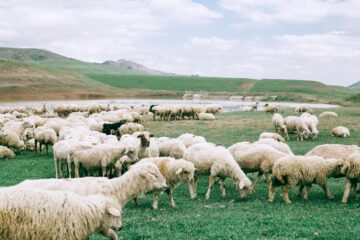Lame sheep do not thrive to their full potential (lower growth rates, fertility and survival) and this loss in production combined with the cost of treating lame sheep represents a huge cost to sheep farmers. Michael Gottstein, Teagasc Head of Sheep KT, outlines the steps to reduce lameness in sheep
Apart from being an animal welfare issue, lame sheep do not thrive to their full potential (lower growth rates, fertility and survival) and this loss in production combined with the cost of treating lame sheep (labour, footbath solution and antibiotics) represents a huge cost to sheep farmers. The initial target for all sheep flocks is to get the level of lame sheep below 5%. Once this has been achieved a lower target of achieving a level of lameness in the flock to less than 2% can be targeted by aggressive culling of sheep that are lame on more than one or two occasions.
Causes of lameness in sheep
The causes of lameness in sheep are many and varied. Therefore before a control programme is put in place proper identification of the responsible organism needs to happen. Misdiagnosis leads to mistreatment. In Ireland the main two causes of lameness are scald and footrot and these are thought to account for approximately 90% of lame sheep. The remaining 10% arise from other infections and injuries to the feet.
The following are some of the more common causes;
- Sores (inflamed or reddened skin) between the digits, no smell from the sore and sheep have become severely lame very quickly. This is most likely to be scald.
- Hoof horn lifting, foul smell, rotting in hoof, usually starting at the around the outside of the hoof. This is most likely to be footrot.
- Infection breaking out between the coronary band and the hoof. (i.e. where the hoof meets the hair on the leg. Severe lameness and no smell. This is likely to be Contagious Ovine Digital Dermatitis.
- Injuries and infections in the joints etc are generally characterised by swelling, heat and tenderness in the affected area.
Identifying the cause of the problem is relatively easy. Putting in place an effective control programme which cures infected sheep and prevents other sheep from getting infected is a different matter altogether. Flocks with good handling / footbathing facilities ‘in general’ have far less problems with lameness. Consequently flocks that are continually struggling with lameness in the flock should have a critical look at their handling and footbathing facilities.
Managing lameness such as footrot, scald and CODD requires early and appropriate intervention. The longer that an infected sheep is left untreated the greater the severity of the infection will be and the greater the likelihood will be that the disease will have been transmitted to other sheep in the flock.
Steps to reduce lameness in your flock
- Count the number of lame sheep in your flock on a given day. A lame sheep is any sheep with an unusual gait. (Target should be to have less than five lame sheep in every 100)
- Separate any sheep that are lame from the rest of the flock. Lame sheep are easily identified after being foot bathed as they will be lifting the infected leg.
- Identify the cause of lameness and treat accordingly – speak to your vet as footrot and CODD will require antibiotics to effectively treat them.
- Regularly footbath your flock – batch footbaths where the sheep can be left stand in the solution for a period of time are most effective. Walk through footbaths are of limited use except for the control of scald in lambs.
- Stop paring the feet of lame sheep – it makes the situation worse not better.
- Cull sheep that are persistently lame or continually reoffending where possible
- There is a vaccine available which will help reduce the incidence of footrot, but on its own it will not eliminate footrot (research carried out in the UK suggests its efficacy is in the region of 65%).
Watch Teagasc Tom Coll, Advisor and Catherine O’Leary MSD Animal Health demonstrate on treating lameness in this video
Source: Teagasc



